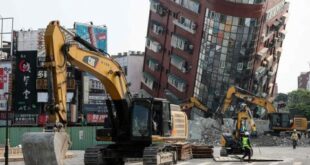Local government units in Metro Manila suspended classes at all levels yesterday due to heavy smog, which most mistook for volcanic smog or vog from Taal Volcano.
By the afternoon of Friday, classes in all 16 cities and the lone municipality of Pateros had been suspended. Marikina City suspended classes from noon Friday until Saturday.
“As part of the precautionary measure, we are advising the people, especially those with asthma, lung and heart disease, senior citizens, pregnant women, and even children, to wear face masks and limit outdoor activities,” Metropolitan Manila Development Authority (MMDA) chairman Romando Artes said.
Taguig City Mayor Laarni Cayetano said she ordered the suspension of classes at all levels (from preschool to college) due to the potential health hazards from the smog.
Still, city officials said the air quality in Taguig remains safe as particulate matter and sulfur dioxide are at minimal levels. But they, too, advised people to reduce outdoor activities, close windows, and wear masks.
Despite the widespread belief that the smog came from Taal, the Philippine Institute of Volcanology and Seismology (Phivolcs) said the haze in Metro Manila did not come from the volcano but was most likely from heavy vehicular emissions.
The volcanic smog, the agency said, was only over the western side of the volcano and was not headed toward Metro Manila.
Rhea Torres, a state weather forecaster, said thermal inversion—where the air is hotter than the surface temperature—kept pollutants from vehicular emissions from being dissipated.
She added, however, that smog from Taal could reach Metro Manila by Thursday night.

Phivolcs director Teresito Bacolcol said: “For as long as Taal Volcano is spewing out sulfur dioxide, this will be a recurring threat.”
The Civil Aviation Authority of the Philippines sent an advisory to flight operators to avoid flying close to Taal Volcano following its recent activity.
“The volcano is on Alert Level 1. Flight operations are advised to avoid flying close to the volcano’s summit as airborne ash and ballistic fragments from sudden explosions may pose hazards to aircraft. Vertical limits are from the surface up to 10,000 feet,” the agency stated in its Notice to Airmen.
Philippine Airlines said its commercial flights to and from the Ninoy Aquino International Airport remain unaffected by Taal’s volcano emissions.
“As a precautionary measure, we are avoiding flight paths near the vicinity of Taal volcano,” said PAL spokesperson Cielo Villaluna.
Meanwhile, the Batangas Provincial Disaster Risk Reduction and Management Office said there was zero visibility in the towns of Tuy, Balayan, Lian, and Nasugbu.
Speaker Martin G. Romualdez on Friday urged the Department of Health (DOH) and LGUs to help people affected by the Taal’s volcanic smog.
“We have to assist residents of areas around Taal Volcano like Batangas, Cavite, Laguna, and even Metro Manila to cope with this temporary problem,” he said.

He said the DOH and LGUs should distribute N95 face masks and other protective gadgets to affected residents. Romualdez said he received information from Deputy Majority Leader and ACT-CIS Rep. Erwin Tulfo that the DOH still has enough supply of N95
face masks procured during the COVID-19 pandemic.
“We have to protect affected residents from volcanic dust and gases, and from possible respiratory ailments,” Romualdez said.
The DOH in Calabarzon went on “code white alert” due to gas emissions from Taal.
“We have raised the alert status due to persistent sulfur dioxide emission that is causing smog or vog from Taal Volcano in Batangas,” said DOH Calabarzon Regional Director Ariel I. Valencia.

Code white alert status refers to the readiness of the hospital workforce to respond to any emergency situation.
He urged Batanguenos to stay indoors and wear masks to prevent respiratory infection.
He added that vog “should not be taken lightly as sulfur dioxide poses a serious threat to human health that can cause eye irritation, throat, and respiratory diseases.
On Thursday, the DOH received reports that some students from Batangas were brought to a rural health unit due to exposure to volcanic smog.
In its Thursday bulletin, Phivolcs said that volcanic smog has been observed over Taal Lake and has lingered over the region. Continuous upwelling persists at the Taal main crater, generating steam plumes that rose to 2,400 meters.
Taal’s main crater has been spewing a total of 4,569 tons per day of volcanic sulfur dioxide gas.
Please enable JavaScript to view the comments powered by Disqus.
*****
Credit belongs to : www.manilastandard.net
 MaharlikaNews | Canada Leading Online Filipino Newspaper Portal The No. 1 most engaged information website for Filipino – Canadian in Canada. MaharlikaNews.com received almost a quarter a million visitors in 2020.
MaharlikaNews | Canada Leading Online Filipino Newspaper Portal The No. 1 most engaged information website for Filipino – Canadian in Canada. MaharlikaNews.com received almost a quarter a million visitors in 2020.

